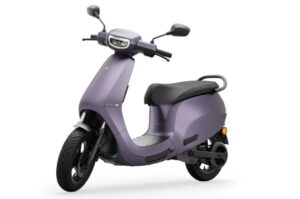
Your car may experience problems with water logging, corrosion, or even complete failure due to heavy rain continuing to fall across the nation. Thus, driving in the rain might be challenging during monsoon or leaving your car parked. However, you may need to have monsoon car care tips on hand to protect your car.
8 Car Care Tips for Monsoon Season
Check your tires
In the monsoon season, tires can make or break your game. The tires’ grip guarantees your safety while driving. Tire tread refers to the rubber pattern around the circle of the tire. A smooth driving experience is what tread offers when it comes into contact with the ground or the road. Even a minor tire tread alignment issue causes serious accidents.
On the other hand, when it rains, the air pressure in your car’s tires becomes crucial. So, one should always check tires before the rainy season starts or even when taking out your car.
Lights
You’ll experience visibility issues throughout the monsoon season. Even if you have large headlamps, one should always inspect them. Thus, when it rains continuously a lot of problems occur like fog formation on headlamps, indicators, and tail lights whenever you cross routes during rain showers. Occasionally, an undetected leak or opening allows water to enter the headlight glass. Look for leaks and cracks on the glass of the headlights, taillights, and indicators and get them fixed, or in some cases replace them. Whenever you go out or on a journey make sure the lights are bright enough.
Air Conditioner
During monsoon season, the level of humidity increases which increases condensation and moisture inside the car. Thus, increase mould & fungus and produce bad odours. The moisture in your car’s air conditioner frequently encourages the growth of mould and mildew. To prevent the growth, use AC disinfectant spray, it inhibits the growth of and removes pathogens, microorganisms, fungi, and bacteria from the AC.
Check for Leaks
Rubber seals are installed in every car to aid in keeping water out. However, it is possible that the rubber loses its hold with time and is no longer as effective at protecting the car. As a result, you will see a water drip inside the car. Also check there is no moisture accumulating on rubber parts of the roof, windows, windshields, door sills, etc. Thus, check the leaks and the condition so that you are as sheltered inside the car as you would be at your home.
Wipers and washer
Wiper blades have a propensity to degrade quickly. Do check or replace your wiper blades before the monsoon season starts. Additionally, make sure the wipers are operating properly at all speeds. To keep the windshield glass clean, keep the wiper washer bottle full and, if you’d like, add a mild windscreen cleaner.
Brakes
Brakes are one of the most important parts of a car. One should regularly check and replace if needed, the brake pads. Do get the brake fluid levels checked. Brake lines should be checked too to ensure there is no air/water ingress. Confirm there is proper brake pedal play for optimum brake operation.
Electricals
Patch any weak or loose electrical connections you notice. Make sure the fuses are in good condition and cover the outside wires during the rainy season.
Emergency kit
During monsoon season, we never know when we’ll get stuck in the heavy rainfall. Always carry an emergency kit at hand like a phone charger, power bank, tow cable, raincoat, umbrella, flashlight, and jumper cable.
Conclusion
Finally, low grip and poor sight may be a result of the heavy rain. Drive more slowly than you normally would to ensure that you can react quickly if you need to overcome a barrier of any kind. Thus, follow the above car care tips and you should be ready for the rainy season.
Read Next Blog:
Step by Step Guide to Drive Car Safely






